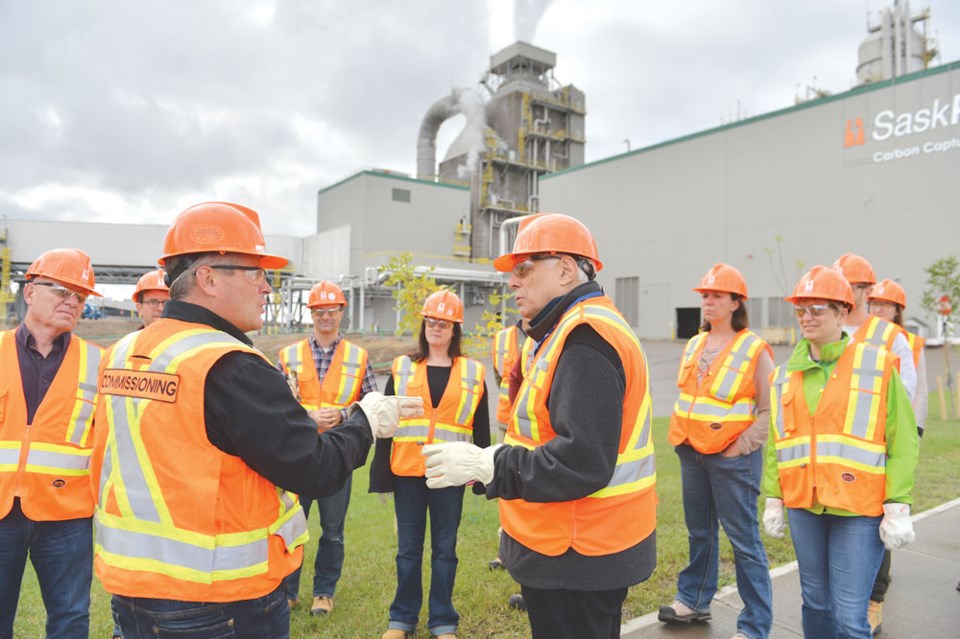The SaskPower Boundary Dam 3 Integrated Carbon Capture and Storage Project was part of a tour for influential American policy-makers crossing the prairies. Stops included hydro power in Manitoba, the Boundary Dam project, Petroleum Technology Research Centre in Regina, Fort McMurray oilsands, and culminating in Banff.
The Pan Prairie Energy Tour was organized by the Canadian Embassy in Washington. It stopped in Estevan and Regina on Sept. 26. Twelve people took part.
Near Estevan they were given a tour of the carbon capture facility and a quick look at the power plant portion of the project.
Ian Mead is assistant administrator for energy analysis, Energy Information Administration, said, “I’m here from the U.S. because our greatest trading partner in energy is Canada. It’s important to build those relationships. I’m here to learn more about what’s going on on the Canadian side of the border.”
Samantha Gross, an engineer by trade, is Energy and Climate Change Fellow with the Brookings Institution, said, “This plant is a first of it’s kind facility. It’s a bit of a proving ground for CCS technology. I do policy work, but I’m and engineer by background, so it’s a lot of fun for me to walk around and see how the facility works and also hear from the engineers here on the ways they feel like they can improve in the future and bring costs down, how this technology can be improved and applied.”
Asked about the place of carbon capture and storage (CCS) in policy around the world, she said, “I think the place of CCS in policy is something we’re trying to figure out. The importance of this facility is we’re starting to straighten out how the technology works and what it might cost. Where it gets applied will depend on a few major things. One of them is the cost. One of them is the local resource base, and how that plays into the local economy. And then the policy environment, obviously, matters a ton.
“CCS isn’t free. You’re taking down the output of the plant in order to run the CCS plant,” she said, referring to the parasitic loss of power produced used to run the capture project.
“The people who spoke to use here focused on the certainty of local coal prices and local coal supply, and on coal’s role in the local economy. Those kinds of things are going to play where CCS makes sense for less,” Gross said.
“Ultimately, the power produced needs to compete in the marketplace. There are various ways to make that happen. Policy is very important, whether you price carbon, or as Canada is doing, you set a cap on emissions from power plants in the future. There are many ways to skin that cat.
Mead said CCS is one possible option, and that it’s very regional. “There are a lot of different strategies to go about reducing carbon dioxide emissions. Each one is specific. This is a good example of one of the first commercially viable ones that’s starting to learn some lessons (from).”
What happens with natural gas prices has an impact, he noted.
Gross pointed out the costs of zero emissions power, like wind and solar, and energy storage solutions, are also important.
Rachel McCormick, with Global Affairs Canada, and the Canadian Embassy in Washington, said, “When I talk to experts, they talk about the first stage of getting to our greenhouse gas goals. As we move into decarbonization, CCS could be important in other applications as well, in other industrial sectors and otherwise, as well as in electrifying the economy. This is one of the tools we could use to get there.”
She noted disruptive technologies could have an impact as well.



